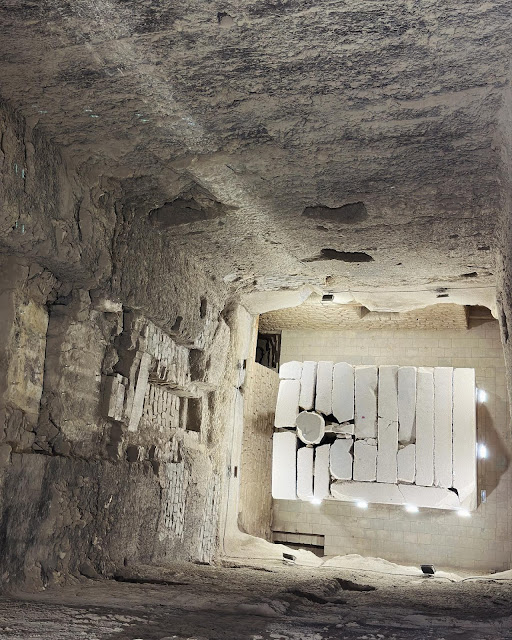The pyramid of Djoser, sometimes called the Step Pyramid of Djoser, is an archaeological site in the Saqqara necropolis, Egypt, northwest of the ruins of Memphis. It is the first pyramid to be built. The 6-tier, 4-sided structure is the earliest colossal stone building in Egypt.
What is a step pyramid?
A step pyramid or stepped pyramid is an architectural structure that uses flat platforms, or steps, receding from the ground up, to achieve a completed shape similar to a geometric pyramid. Step pyramids are structures which characterized several cultures throughout history, in several locations throughout the world.
Who was buried in the step pyramid?
The ancient Egyptian pharaoh that gave the pyramid its name, Djoser, sometimes spelled Zoser (though he was actually called Netjerykhet) ruled during Egypt's third dynasty. Scholars attribute the planning of the pyramid to Imhotep, a vizier who would later be deified for his accomplishments.
The Step Pyramid of Djoser was built about 4,700 years ago with six layers above ground and a series of tunnels below.
The sheer age of the Step Pyramid is astounding. It was built in the early Third Dynasty, during the reign of King Netjerykhet (c.2667–2648 BC), who is now more well-known as Djoser.
Before his reign, royal and elite Egyptians were buried in mastabas. This word, meaning “bench” in Arabic, refers to a type of funerary structure that was generally rectangular in shape and built over the tomb proper, which was underground. The Step Pyramid is composed of six stacked mastabas, thus creating the stepped effect. Imhotep, its architect, may very well have been responsible for this major innovation.
At one end of the pyramid complex, a structure known as the South Tomb is believed to have acted as an additional, symbolic, tomb for Djoser, perhaps reflecting his role as the dual king of both Upper and Lower Egypt.
Djoser’s pyramid complex also has some unique features. The two courts in front of the pyramid recreate the setting of the Sed Festival, a royal ceremony aimed at rejuvenating the king and regenerating his power. The structures on the side of the eastern court emulate in stone the ephemeral shrines that were used in this festival, thus ensuring that the king could continue being rejuvenated forever.
Visiting the Pyramid of Djoser Today
Today, the Pyramid of Djoser remains a major tourist attraction, drawing visitors from around the globe to marvel at its ancient grandeur. Efforts to preserve and restore this architectural wonder continue, ensuring that future generations can experience its historical significance.
Guided Tours: Visitors can take guided tours of the Saqqara necropolis, providing in-depth insights into the history and architecture of the Step Pyramid and surrounding structures.
Virtual Tours: For those unable to visit in person, virtual tours offer an immersive experience, allowing exploration of the pyramid’s intricate details from anywhere in the world.
How to Access the Virtual Tour
3D Models and Animations: Engage with interactive 3D reconstructions and animations that bring the ancient structures to life, showing how they would have appeared in their prime.










No comments:
Post a Comment